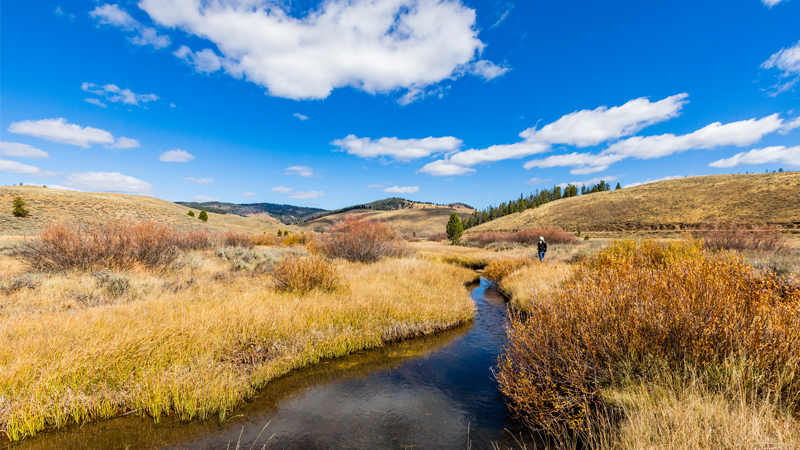The BLM does allow the public and businesses to use some of its land. That’s the law. The BLM is supposed to accommodate energy production, outdoor recreation, and conservation.
The Bureau of Land Management is a federal agency that controls 245 million acres of land and controls 30% of the country’s mineral resources. On the East Coast, it manages little land but manages an enormous share of Western states. It owns over two-thirds of Nevada. This gives the federal government enormous sway over the West. Want to go hunting? Want to start a logging company? Want to go hiking? Better make sure it’s okay with the federal government first.
The BLM does allow the public and businesses to use some of its land. That’s the law. The BLM is supposed to accommodate energy production, outdoor recreation, and conservation.
One of the uses that the BLM allows is gold mining. According to the GAO, billions of dollars worth of gold are mined from these lands annually. The status quo is quite favorable for mining of gold and some other precious metals like silver, lithium, and copper because the miners are not required to pay royalties to the federal government which owns the land the resources are extracted. This is in contrast with fossil fuel extraction on public land where energy companies are required to pay royalties.
But recent moves by the Biden administration bureaucrats in charge of BLM suggest that the administration is taking aim at precious metal production and might cut off the supply of precious metals from precious land.
The BLM and the broader Biden administration are doing this in two ways. First, Biden is designating more and more federal land as national monuments. National monuments are kind of halfway between national parks that are set aside for conservation and limited recreational activities such as hiking and the normal federal land managed by the BLM which is generally open to hiking, hunting, and sometimes mining and logging. Every president has the power to declare federal land a national monument under an obscure law from 1906, the Antiquities Act. The Antiquities Act was meant to be used to preserve prehistoric Native American ruins, but as written allows the president to unilaterally use, at his discretion.
While these new monuments might be popular among liberal staffers at the Biden White House and environmentalists, creating new national monuments is often unpopular among the people who have to live around them. One of the new Biden administration’s national monuments in Arizona has been condemned by state leaders and mining companies who argue that “it aims to halt all mining, ranching, and other local uses of federal lands that are critical to our energy independence from adversary foreign nations, our food supply and the strength of our economy.”
President Obama used the power to create monuments far more than previous presidents- he created 26 new national monuments that cover over 88 million acres, and he extended the boundaries of existing national monuments to cover hundreds of millions more acres. If Biden follows Obama, more and more American land will be micromanaged by the federal government, with diminished opportunities for mining.
The other step the BLM is pursuing that might cut off precious metals production is the proposal of the innocuously named “Public Lands Rule.” The rule, which the BLM plans to soon implement would in the BLM’s own words “ensure that the BLM can respond to these pressures, managing for healthy lands today so that it can deliver its multiple-use mission now and in the future — to ensure the health, diversity, and productivity of public lands for the use and enjoyment of present and future generations.” In practical terms, experts have pointed out this would mean that BLM would shift from trying to balance different uses of land- hiking, hunting, fish, and mining- to putting environmentalists’ concerns first.
Because the rule would make it easier for the federal government to close lands to mining, it has faced opposition from Western states including the governors of Utah, Idaho, Montana, Nevada, South Dakota, and Wyoming.
Biden’s first (and perhaps last?) term is nearing its end, but if he has a second term, his administration will likely ramp up opposition to precious metals mining. Even if he is defeated, there is a long precedent of presidents rushing out extreme regulations in their final weeks of office once they no longer have to worry about re-election. Federal opposition to the production of gold is likely to intensify in the short term, no matter which way the presidential election goes.
Economist Warns Rollout Of The Mark Of The Beast Being Prepared By Central Bank


